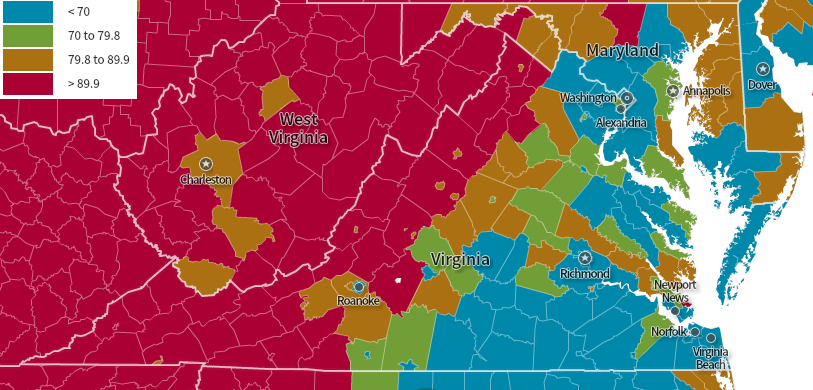
in 2014, most jurisdictions west of the Blue Ridge were at least 90% white, in contrast to communities east of the mountains
Source: Social Explorer, US Demography: 1790 to Present

in 2014, most jurisdictions west of the Blue Ridge were at least 90% white, in contrast to communities east of the mountains
Source: Social Explorer, US Demography: 1790 to Present
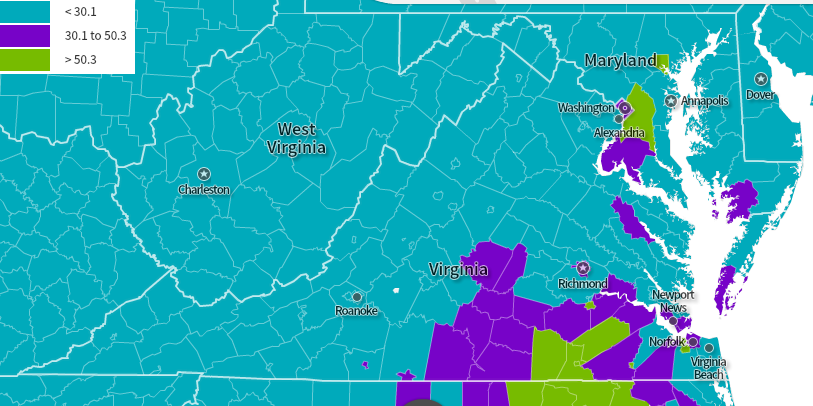
in 2014, the jurisdictions that were at least 30% black were concentrated in Southside Virginia
Source: Social Explorer, US Demography: 1790 to Present
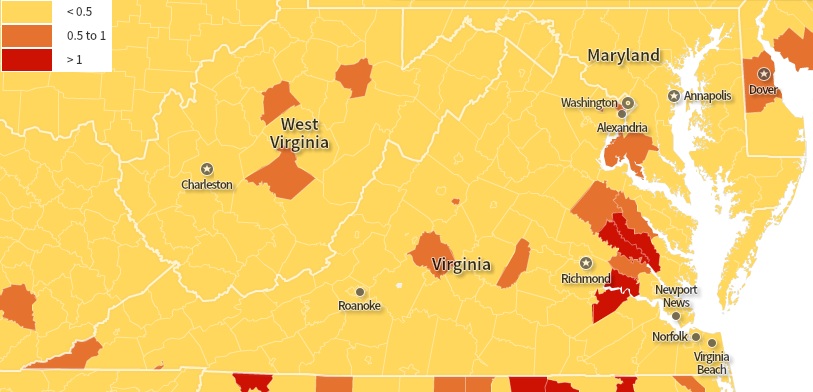
in 2014, four Virginia counties had more than 1% Native American population
Source: Social Explorer, US Demography: 1790 to Present
Virginia's current population mix is dramatically different from that in 1500, when 100% of residents were Native American. Voluntary immigration by Europeans and forced transport of slaves from Africa are the primary reasons why Virginia now has a diverse population. Since the 1960's, minority populations in Virginia have gained more political power - but a century earlier, the black minority held the balance of power in Virginia elections after the Civil War.
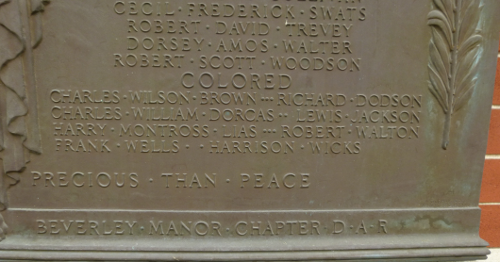
the plaque on the Augusta County courthouse wall honoring local soldiers who died in World War I lists the "Colored" separately, while the plaque for World War II makes no such distinction
Initially, the newly-emancipated blacks voted as a solid bloc for the Republican party candidates. After adoption of the Underwood Constitution in 1869, the voting power of the black population remained important. Blacks were key allies of the Readjusters, initially.
The last elected black official of the post Civil War era was John Mercer Langston. He served only the last 161 days of his 1888-90 term, after finally overcoming objections and being seated officially.
Dumfries elected the first black municipal official of the modern era in 1961. John Wilmer Porter was elected to the town Council in 1961. He was well-known in the local community; Porter Brothers Garage was a key business in the small town, and it served both blacks and whites despite the segregation pattern of the times.
Lawrence Davies was elected to the City Council of Fredericksburg in 1966, and then became mayor. In 1970, Rev. Noel C. Taylor (minister of High Street Baptist Church) was elected to the Roanoke City Council. He became the Vice-Mayor in 1974, and then became the first black mayor in western Virginia when the incumbent died in 1975.
Virginia elected Douglas Wilder as lieutenant governor in 1985 and as governor in 1989. In 1994, Virginia elected its second black man to Congress, Representative Bobby Scott from Newport News. Virginia has never elected a black senator to the United States Congress.
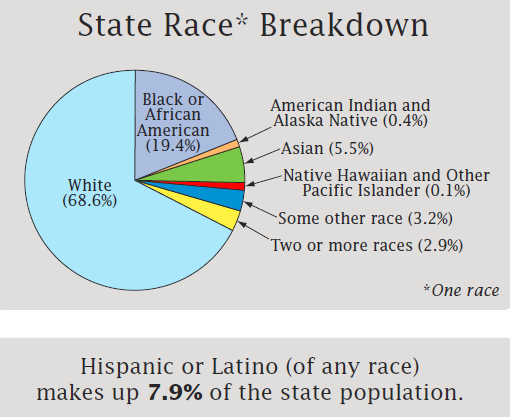
Virginia population by race in 2010
Source: Bureau of Census, 2010 Census: Virginia Profile
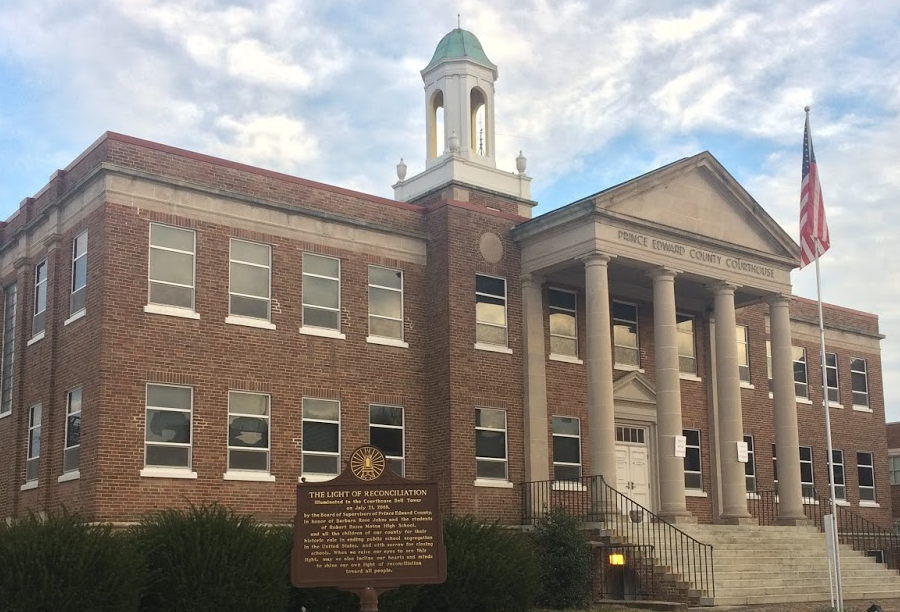
Prince Edward courthouse in Farmville, the county where local white leaders agreed to close public schools for four years
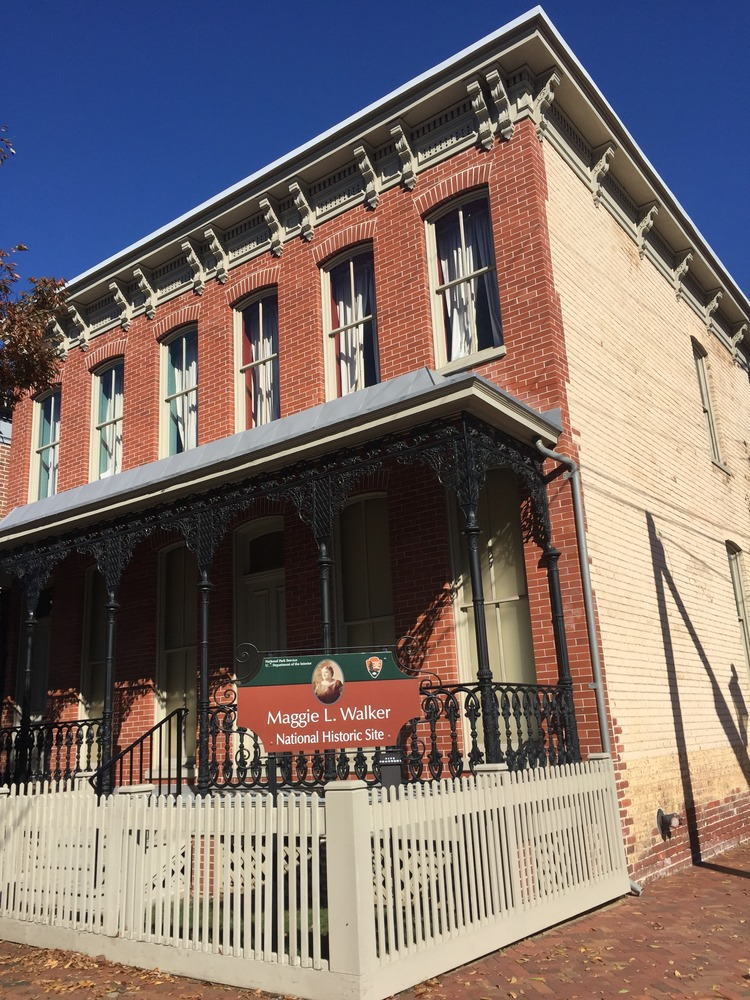
the Maggie L. Walker National Historic Site in Richmond is a unit in the National Park Service system
Source: National Park Service / Victoria Stauffenberg, Maggie L. Walker National Historic Site
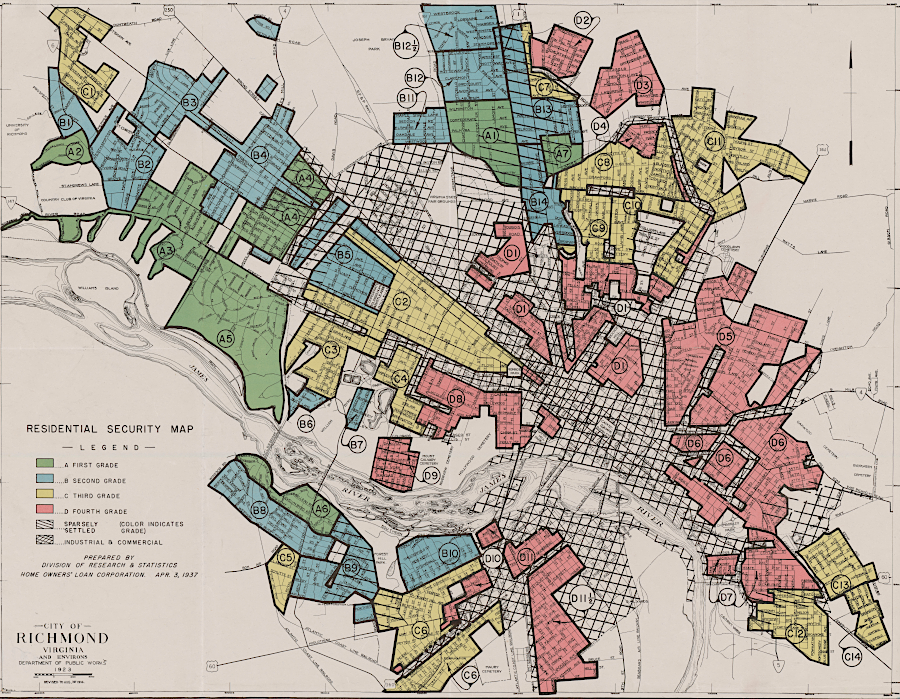
banks defined zones based on race and declined to issue loans for purchasing houses outside of white-majority neighborhoods
Source: National Archives, City of Richmond, Virginia and Environs
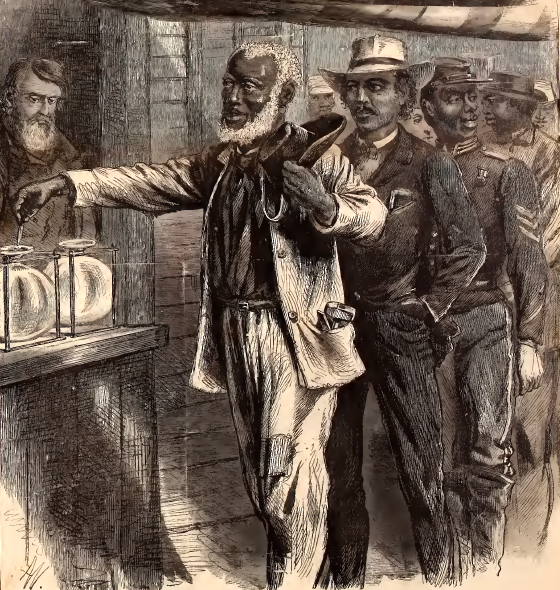
"The First Vote" - black Virginians could vote on October 22, 1867 for representatives to the convention that produced the 1869 Underwood Constitution
Source: Harper's Weekly (November 16, 1867, p.721)
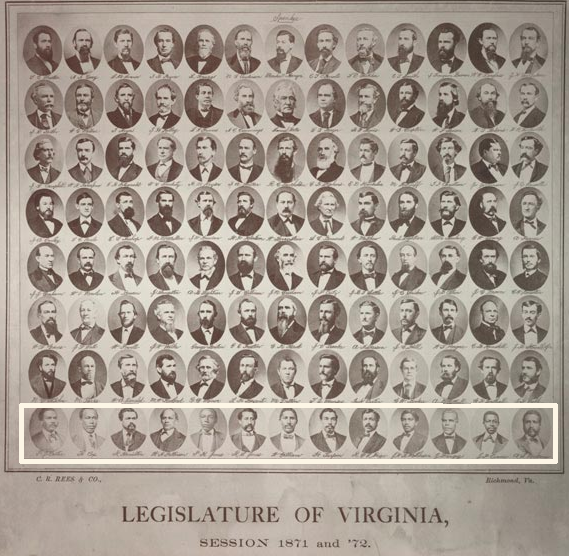
between 1869-1890, roughly 100 African-American men served in the General Assembly
Source: Dr. Martin Luther King Jr. Memorial Commission, Arican-Amrican Legislators in Virginia